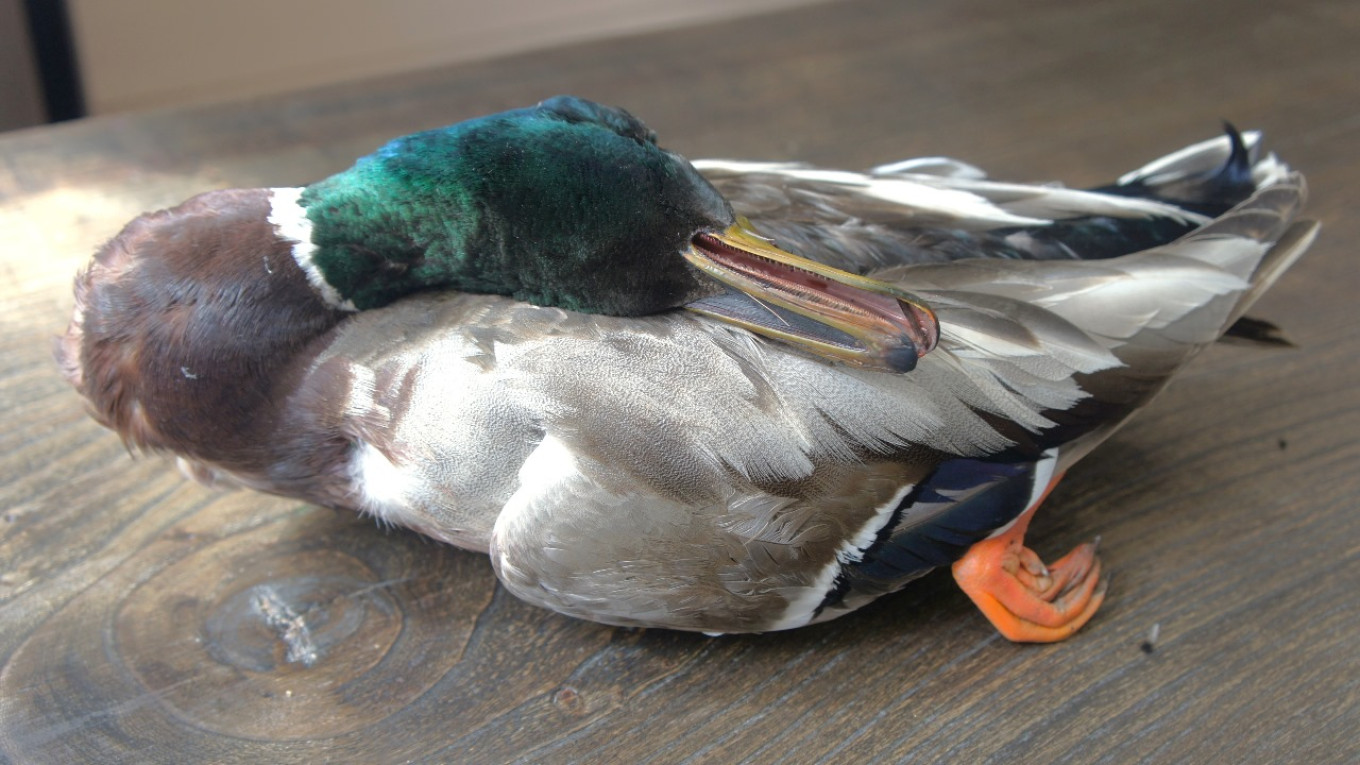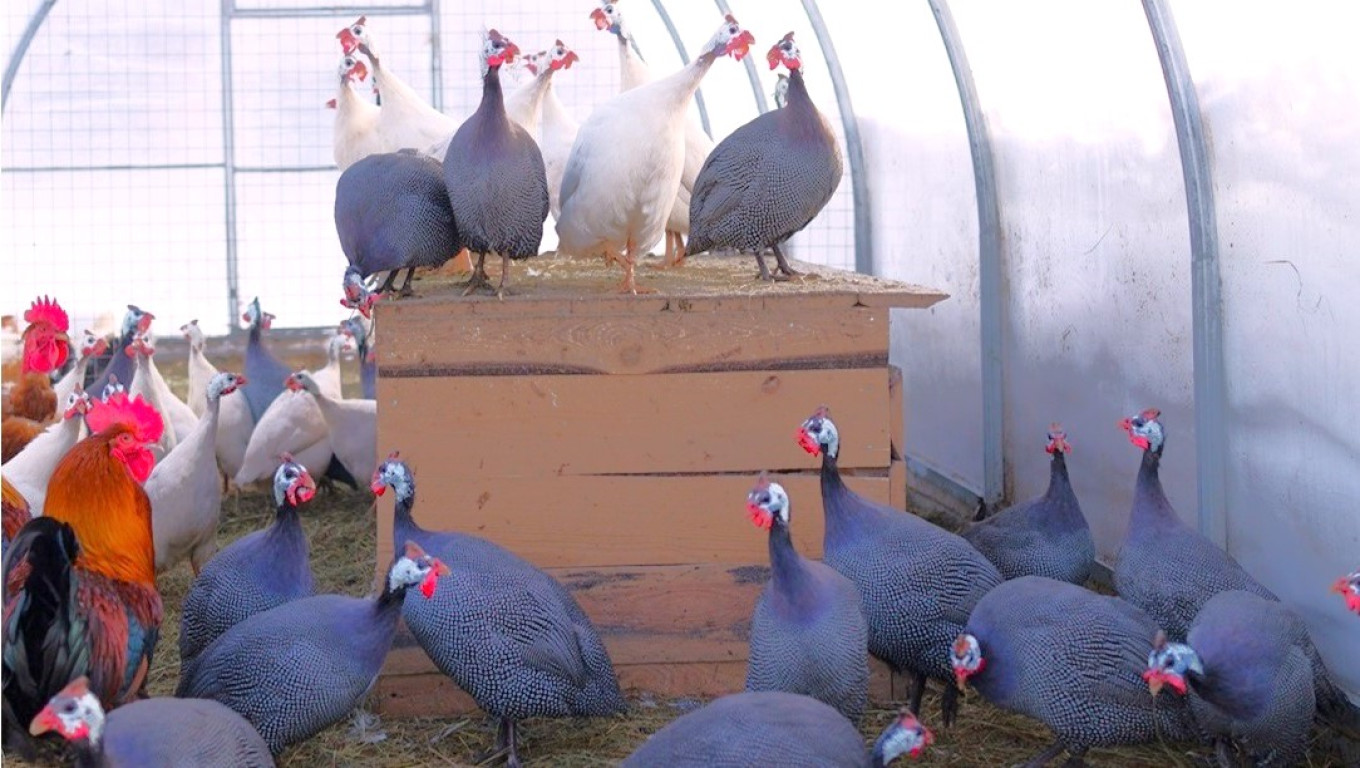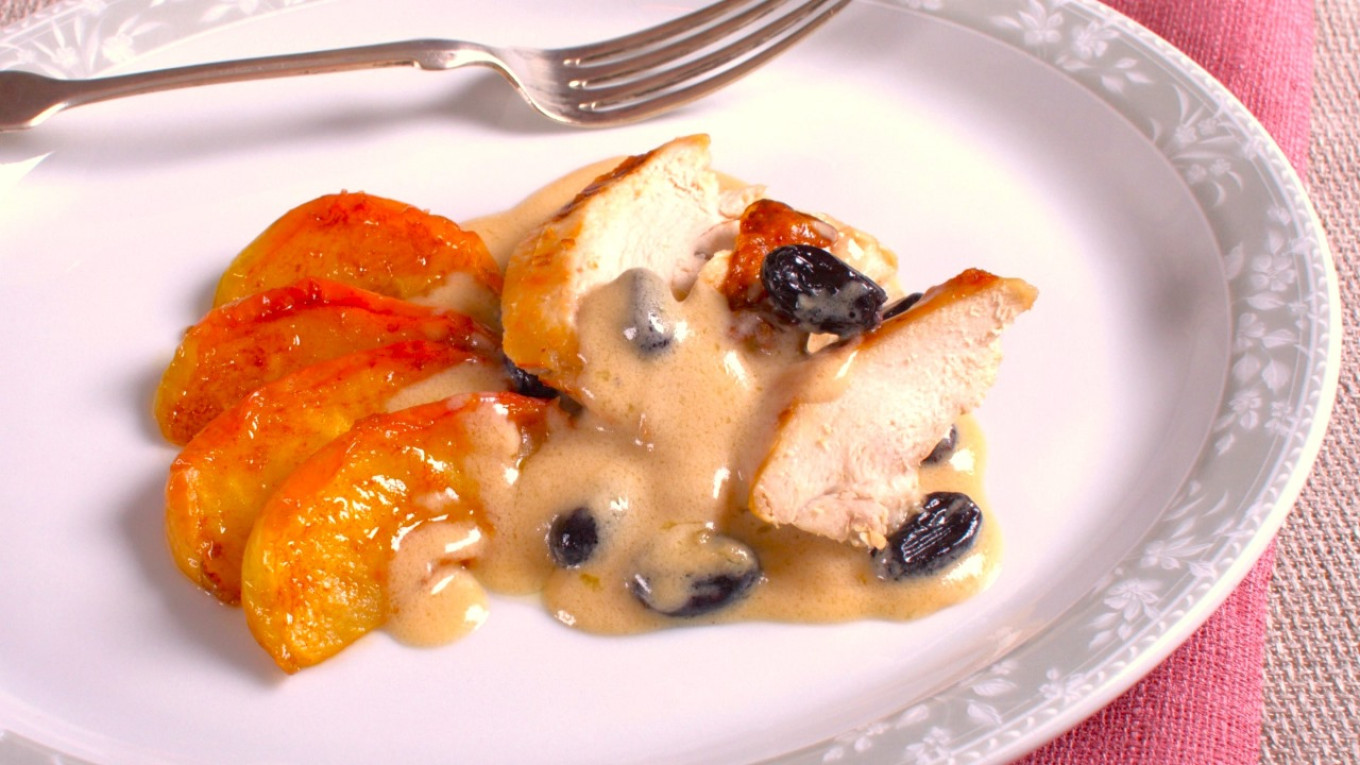Many centuries ago in Moscow the main dish of a New Year’s feast was roasted swans. If today there are no swans available where you live, you can celebrate without them, chosing instead from today’s enormous variety of wild and farmed fowl. After all, tradition does demand serving poultry on holidays. This has a very long history in Russia.
“After the tsar himself handed around bread, servants solemnly entered the dining hall carrying aloft gold and silver platters holding roasted swans decorated with feathers and gilded beaks.” That is a description of a ceremony in the Kremlin written in “Notes of Moskovia” by Austrian diplomat Siegmund von Herberstein who visited the Russian capital twice — once in 1517 and once in 1526.
“The stewards went out to get the food and brought vodka, which is always drunk at the beginning of dinner, and then roasted swans, which they almost always serve their guests as a first course on days when the church calendar allows meat. Three swans were placed before the sovereign; he pierced them with a knife to see which was preferable and better than the others. Near the door to the dining-room was a table for cutting up the food; there they carved the swans, placing four wings on one dish and four legs on another… When we began to eat the roasted swans, they seasoned them with vinegar, adding salt and pepper. Sour milk was served for the same purpose, as well as pickles and plums prepared in the same way.”
Peer Persson de Erlesunda, the envoy of the Swedish king Charles IX (1604-1611), wrote “If there are no roasted swans, the host is not much honored.” The guest are not honored either, since this ceremonial dish was not prepared for their reception.

Up to 200 dishes were served at these royal feats. Not only swans were roasted; festive dishes were made of cranes, herons, pigeons, larks, sandpipers and even flamingos, though the latter were hunted only for their tongues, which gourmets highly valued.
In the 18th century an important change takes place. Wild birds give way to domestic birds. In Vasily Lyovshin’s “Russian Cookery” published in 1795-1798 there is no mention of swans, but there are recipes for roasted pheasants, grouse, sandpipers and thrushes.
Geese and ducks became the new favorites of the festive winter table. The barnyard goose was quite familiar to everyone and had been cooked since ancient times, but the duck was different. Until the 18th century it was not raised as domestic poultry. But wild ducks have the habit of flying away from morthern latitudes to celebrate Christmas in the south. Because they start leaving their northerm summer habitats when frost covers the surface of a pond or river, the temperature at that time sometimes falls from “plus” during the day to “minus” at night. So a duck’s carcass could be frozen during this short change of seasons and kept until Christmas.

A duck could be kept frozen in at farms of the gentry or monasteries. But… why? Why put in all that time and energy when there was plenty of other wild fowl in the winter: pheasants, bustards, wood grouse, hazel grouse and partridges, to name just a few. That’s why duck was not a common Christmas dish at that time.
Everything changed when ducks were raised on farms. And then they were welcome on the Christmas table.
But still, duck was somehow too plain and simple. It was not a rare delicacy for the Russian nobility. The memory of the tsar’s swans was still quite fresh in everyone’s mind. Pheasants were a rare bird, not always available. That’s where an overseas guest comes to the rescue: the guinea fowl.
“The guinea fowl can replace the pheasant, if well cooked, in almost every recipe,” wrote culinary specialist Irina Uvarova in her “New Cookbook” published in 1915. “The meat of a young — up to a year old — guinea fowl is so similar to pheasant meat that many people can’t tell the difference.”
The guinea fowl has been known in Europe since antiquity. This bird was very popular with ancient Roman cooks. In the dark days of the early Middle Ages, those recipes were lost and forgotten. It was not until the 15th century that Portuguese travelers brought the guinea fowl back to Europe. From the Iberian Peninsula the birds spread to many European countries.

Scientists were less interested in these birds than cooks. They only began to study them in the 18th century, when they determined that their real homeland is West Africa, more precisely — in and around the Gulf of Guinea, hence the name in English. In Russian it is цесарка.
The guinea fowl came to Russia only in the 18th century. The “Golden Age” of the Russian monarchy required appropriate symbols. And the name цесарка — the bird of Caesar (or the Tsar) — was perfect. Or maybe everything was simpler. In that era representatives of the Holy Roman Emperor arriving from Vienna were called Caesar’s ambassadors. Perhaps their cooks brought this bird with them, and it got it’s name.
These days a flavorful chicken or hen is a rarity. But the guinea fowl is delicious from the very first bite. Well, what would you expect? It’s a game bird, not domestic poultry. It’s the closest thing to pheasant in culinary qualities. In fact old recipes write: “Feel free to use the guinea fowl in any recipe in place of pheasant.”

The dish we are going to make is quick and simple. But despite this (or maybe because of it), it preserves the pure flavor of this royal bird.
Guinea Fowl in Sherry Cream Sauce with Apples
Ingredients
- Guinea fowl, cut into breasts and legs
- melted butter for frying
- salt, pepper to taste.
For apples:
- 2 large apples (sweet-sour or sweet)
- 1 Tbsp butter
- 1 tsp. ground cinnamon
- 1 Tbsp granulated sugar
For the sauce:
- 500 ml (2 c and 2 Tbsp) 22% cream (light cream)
- 100 ml (scant ½ c) sherry
- 50 ml (1/4 c) broth (from the guinea fowl or chicken broth)
- ½ tsp granulated sugar
- large black seedless raisins
- salt, pepper to taste
Instructions
- Lightly fry the breasts and legs of the guinea fowl in clarified butter (regular butter if you don’t have clarified). Then salt and pepper the fowl, wrap in foil and put in an oven heated to 150-160˚C (300-320˚F). Remove the breast meat from the oven after 25 minutes and the legs after 35-40 minutes.
- Meanwhile, prepare the garnish: caramelized apples and cream and sherry sauce.
- Put all the ingredients for the sauce in a saucepan, bring to a boil and cook over low heat until the sauce has reduced by half and thickened. This sauce is great with any white meat — chicken, turkey and even pork.
- Cut the apples for garnish into quarters and cut out the core. Then slice each one into 3 more pieces for a total of 12 slices.
- Take 1 heaping tbsp of butter, 1 tbsp of granulated sugar (preferably brown sugar) and 1 tsp of cinnamon. Heat the butter in a wide frying pan until lightly bubbling and then add the granulated sugar. Heat until sugar dissolves and then place apples in the buttery sugar in a single layer.
- Fry over medium heat on one side for 3 minutes, then flip to the other side and fry until browned. Sprinkle with cinnamon and remove from the pan.
- Plate the guinea fowl and apples and pour the sauce over the meat. And that’s all it takes for a happy New Year feast.

… we have a small favor to ask.
As you may have heard, The Moscow Times, an independent news source for over 30 years, has been unjustly branded as a “foreign agent” by the Russian government. This blatant attempt to silence our voice is a direct assault on the integrity of journalism and the values we hold dear.
We, the journalists of The Moscow Times, refuse to be silenced. Our commitment to providing accurate and unbiased reporting on Russia remains unshaken. But we need your help to continue our critical mission.
It’s quick to set up, and you can be confident that you’re making a significant impact every month by supporting open, independent journalism. Thank you.
Leave a Reply